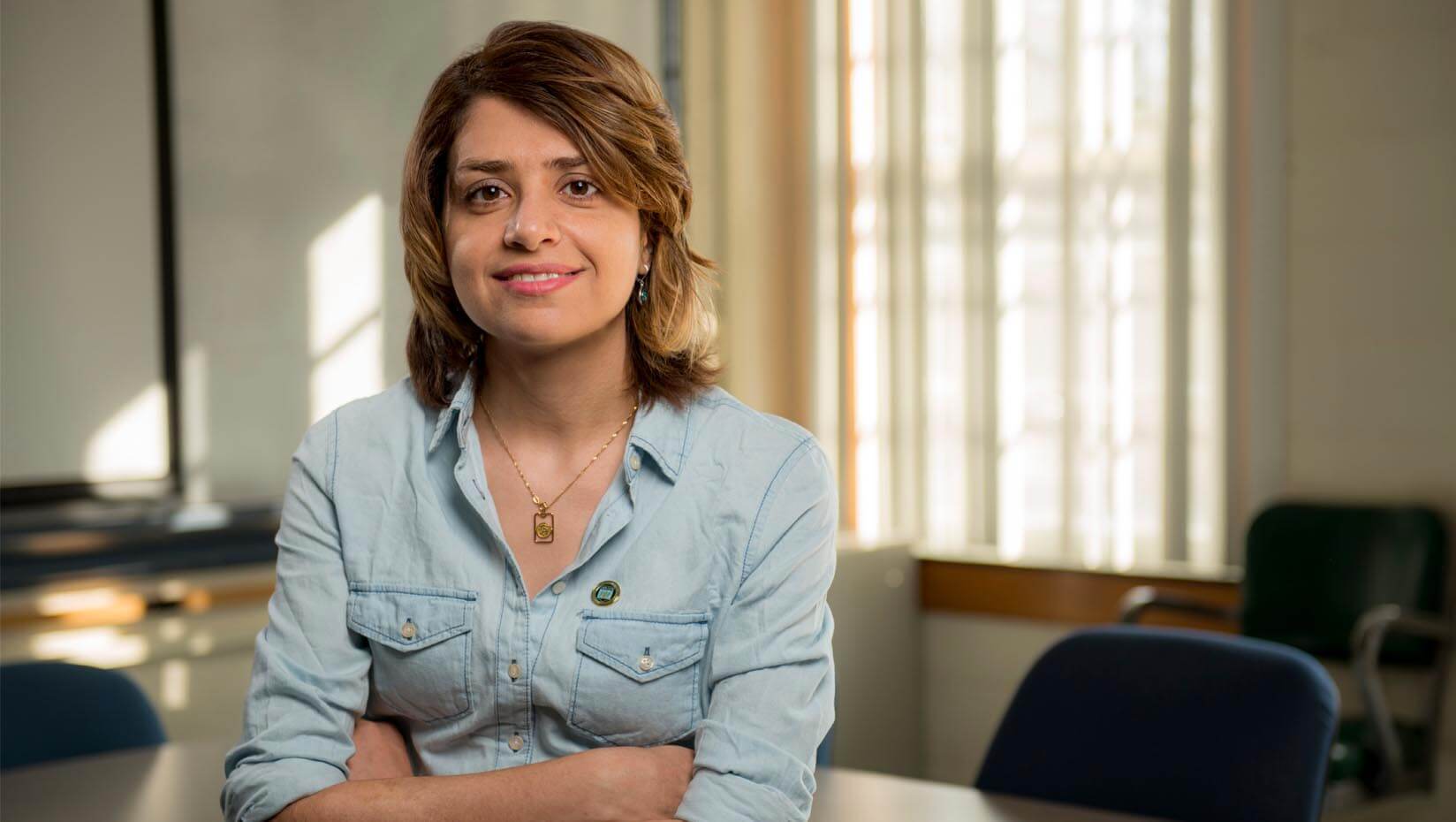SYSTEMS
UMaine's Edalatpour wins NSF CAREER award to study thermal radiation in quantum materials
Components the size of a few atoms, known as quantum materials, can enhance how technology functions and manages its heat. However, little is known about how heat is emitted and exchanged in quantum materials in contrast with their more common counterparts, three-dimensional bulk materials.
Sheila Edalatpour, an assistant professor of mechanical engineering at the University of Maine, is studying how the emission of heat changes when the materials involved are quantum-sized, or when they are separated by a gap of the same size as one or multiple atoms. The proposal earned her an intended amount of $526,858 from a National Science Foundation CAREER Award, the organization's most prestigious award for early-career faculty. The funding is jointly allocated by NSF's Thermal Transport Processes Program and the Established Program to Stimulate Competitive Research (EPSCoR). 
Optical and electronic properties can differ between bulk and quantum materials, and therefore, so can how they transfer radiated heat, according to Edalatpour. Determining how material size affects thermal radiation, the energy emitted from heated surfaces and transferred from one component to another in the form of electromagnetic waves, can help engineers design new materials to build more efficient, powerful, and reliable devices for energy, supercomputing, health care, and other purposes.
"Quantum size effects provide an excellent opportunity for engineering materials with novel thermal properties suitable for energy conservation and conversion technologies such as thermophotovoltaics, solar cells, and smart windows," Edalatpour says. "However, we know very little about how thermal radiation from materials is affected as the material size approaches the quantum scale. We plan to elucidate the quantum effects on thermal radiation via a theoretical-experimental study."
The study will involve creating a theoretical framework for how quantum materials radiate and exchange thermal energy, researching the thermal radiation of different types of quantum materials, and demonstrating how reducing the material size to atomic scales affects the magnitude and spectrum of thermal radiation. Tests will be conducted on zero-dimensional, dot-shaped quantum materials; one-dimensional, line-shaped materials; and two-dimensional, thin film-shaped, materials. Edalatpour will be the first to quantify in exact measurements the magnitude, spectrum, spatial coherence, and polarization of thermal radiation from atomic-scale materials.
By expanding scientists' understanding of thermal radiation at the quantum level, her research may help them create new materials with thermal radiative properties that can more effectively transfer heat in nano-scale devices. These materials could fuel "technological breakthroughs in thermophotovoltaic waste heat recovery, electronic devices, and thermal diodes," all of which can help reduce fossil fuel consumption, according to the UMaine researcher.
Edalatpour also hopes to elucidate how electron tunneling affects thermal radiation. Electron tunneling, when an electron moves through a barrier it cannot typically pass, can occur between two materials separated by a gap of the same size as a few atoms. How the process affects thermal radiation is "not fully understood," according to the UMaine assistant professor.
"Radiative heat transfer at the atomic length scale can play a significant role in thermal management of nanoscale and quantum-scale devices such as transistors, ultra-compact circuits, quantum computers, solar cells, and medical imagers," Edalatpour says.
Edalatpour will recruit female students and students with disabilities, two groups underrepresented in mechanical engineering, at the high school, undergraduate, and graduate levels to assist with the study. She will also seek supplemental financial support to provide research experience for high school teachers from rural Maine. Her work will help create a new course about radiative heat transfer with lectures and lab components.
"By involving high school girls and teachers, we hope to contribute to increasing the number of female students choosing mechanical engineering as their career," Edalatpour says.


 How to resolve AdBlock issue?
How to resolve AdBlock issue?